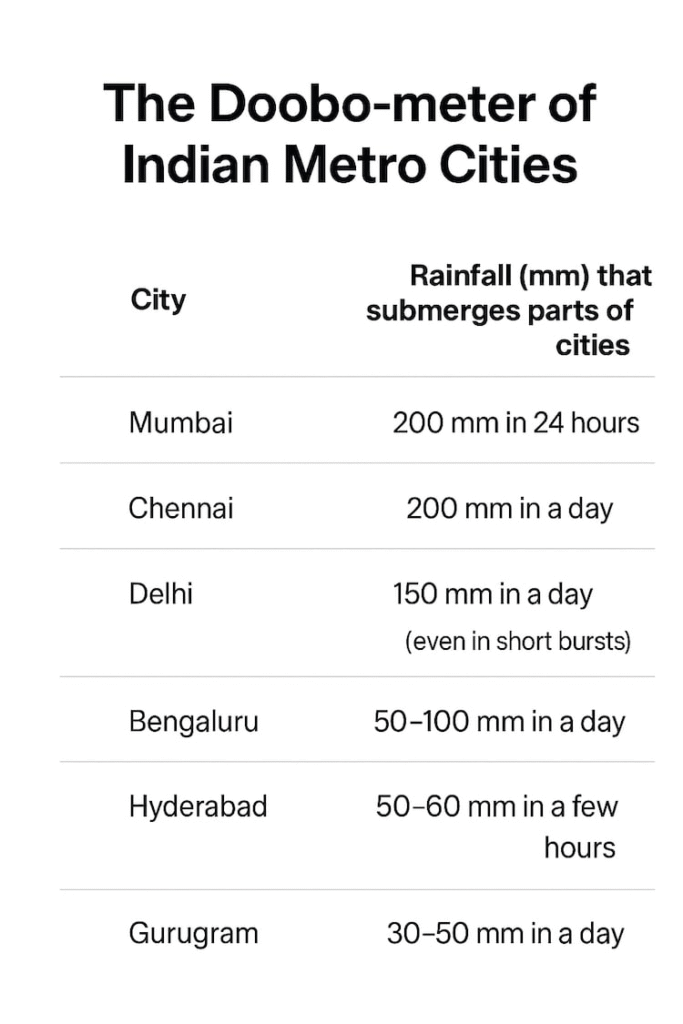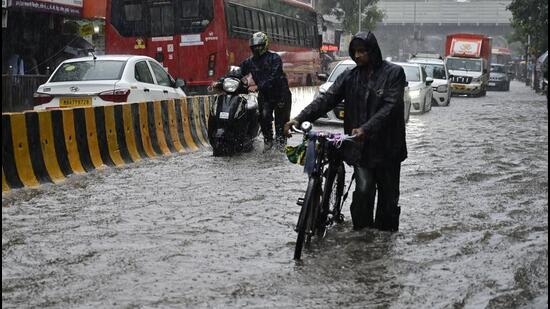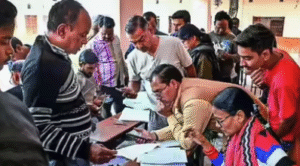Doobo-Meter: How Fast Indian Cities Drown in the Rain
Overnight showers turned Mumbai into a waterlogged maze, forcing schools shut and residents indoors. Days earlier, Gurugram had suffered a similar fate. Delhi, Bengaluru, Chennai—and even smaller cities like Guwahati—face the same story every monsoon: a few hours of rain, and life comes to a standstill.
To understand just how fragile India’s metros are in the face of rain, here’s the Doobo-meter—a measure of how much rainfall it takes to drown our cities.
Mumbai: Paralysed at 200 mm
Nikunj Sabharwal, a Juhu resident, has seen his daily commute along SV Road in Andheri transform into a boat ride every monsoon. “The water rises to chest level in some stretches. I’ve seen NDRF boats rescuing people. Honestly, the Navy could set up a monsoon command centre right here,” he says, only half in jest.
Mumbai, which receives 2,400 mm of annual rainfall, cannot cope with even 100–200 mm in a single day. High tides and the clogged Mithi River make matters worse, and cloudbursts of 300 mm or more paralyse entire suburbs. Architect Rahul Kadri points to outdated drainage networks based on century-old data: “Mumbai doesn’t really have an urban planning department. Beyond a land-use plan, there’s no strategy for water channels or drainage.”
Doobo-meter reading: 200 mm in 24 hours
Delhi: Submerged at 150 mm
With just a quarter of Mumbai’s annual rainfall (around 650 mm), Delhi still drowns with 50–150 mm in short bursts. In August, 104 mm at Safdarjung brought the capital to a halt, submerging buses under the infamous Minto Bridge.
Urban planner Preeti Mishra explains: “Only 45% of Delhi is planned. Unregulated settlements overload the system, and even Lutyens’ Delhi—supposedly the best planned—floods because natural drains were blocked by construction.” She adds that climate change has worsened hourly downpours never anticipated in the city’s design.
Doobo-meter reading: 150 mm in 24 hours
Chennai: Sinks in 200 mm
Chennai, which depends on the northeast monsoon, receives 1,400 mm annually—most between October and December. But just 200 mm in a day or two floods T Nagar, Velachery and North Chennai. Flat terrain and vanishing wetlands make the city extremely vulnerable.
At 300 mm, large parts of the city go under. In December 2015, more than 400 mm in a single day displaced thousands and shut the airport.
Doobo-meter reading: 200 mm in 24–48 hours
Hyderabad: Floods in 60 mm
Hyderabad’s old city areas like Begumpet and Nampally go under with just 50–60 mm of rain in a few hours. In October 2020, 192 mm paralysed the city, exposing how fragile its drainage is.
Doobo-meter reading: 50–60 mm in a few hours

Bengaluru: Tech Hub, Flood Hub
Despite sitting on a plateau and receiving about 980 mm annually, Bengaluru struggles with as little as 50–100 mm of rain. Tech corridors like Bellandur and Whitefield swamp easily, thanks to lake encroachments and poor planning.
Doobo-meter reading: 50–100 mm in 24 hours
Gurugram: Sinks the Fastest
India’s Millennium City is also its weakest link. Just 30–50 mm of rainfall is enough to submerge parts of Gurugram. A recent 133 mm spell left roads underwater and traffic in chaos.
Doobo-meter reading: 30–50 mm in 24 hours
Why Our Cities Keep Sinking
Experts agree it’s not just heavy rain or climate change. Outdated infrastructure, rampant concretisation, clogged drains, and reckless urbanisation have turned every shower into a flood threat. Natural lakes and rivulets have been built over, leaving only undersized artificial drains.
Kadri sums it up: “Urban planning in India gets almost no attention. This isn’t just Mumbai’s story—it’s a pan-India problem.”
Final Takeaway
On the Doobo-meter, Gurugram ranks as India’s most vulnerable metro, drowning in just 50 mm of rain. Mumbai and Chennai hold out until 200 mm, while Delhi, Bengaluru, and Hyderabad fall somewhere in between.
One thing, however, is clear: India’s cities aren’t built for the rains they now face.










